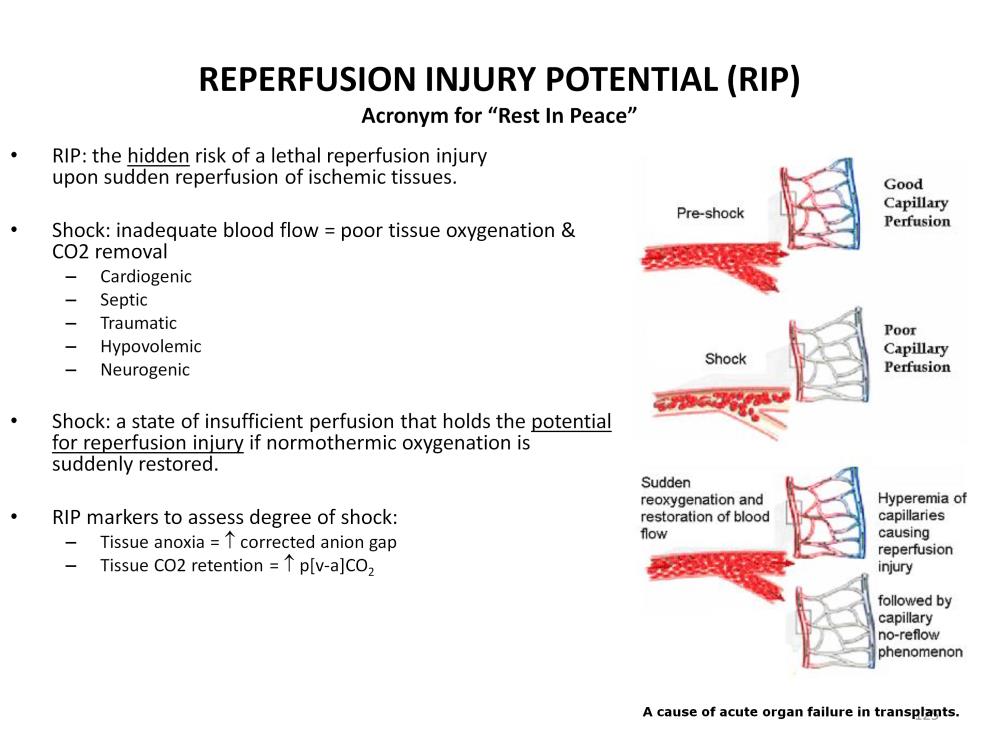
Reperfusion injury potential (RIP) is the hidden risk of a lethal reperfusion injury upon the sudden reoxygenation of ischemic or anoxic tissues. RIP is most common in patients with shock. Shock is an extended state of insufficient perfusion that holds the potential for reperfusion injury if normothermic reoxygenation is suddenly implemented. There are various types of shock, but typically patients who are in acute hemodynamic failure, patients undergoing resuscitation and CPR, patients with severe acidosis requiring frequent sodium bicarbonate or other buffer base infusions, patients with an elevated anion gap or lactate and patients with a large (>15 mmHg) venoarterial CO2 gradient are at risk for RIP. Hypoxemia is not necessarily a predictor of RIP. The corrected anion gap (AGc) and the venoarterial CO2 gradient are two markers that when combined can quantify the degree of RIP that the patient is experiencing.
In the pre-shock state capillary perfusion is good. During shock capillary perfusion is insufficient and the tissues become acidotic. The acidosis deactivates the antioxidants and weakens the cell membrane potential allowing calcium influx. Upon the sudden reoxygenation and restoration of blood flow, capillary hyperemia occurs causing immediate oxygen stress and calcium stress followed by capillary no-reflow phenomenon and cellular apoptosis.
This is a frequent cause of acute organ failure in transplants. Even though the donor organs are protected by hypothermia during preservation and storage, ischemic acidosis still slowly occurs. During this time RIP develops in the cold donor organ. Re-implantation of the cold, acidotic donor organ into a warm recipient is followed by the sudden reinstitution of perfusion when the surgeon connects the arteries and veins. If RIP is present in the donor organ, reperfusion injury will cause acute and sometimes irreversible organ damage. RIP is also an acronym for ‘Rest In Peace’, a common obituary blessing. This is very appropriate because patients with reperfusion injury potential are at a very high risk of dying.

Perfusion Theory is an educational platform for the Oxygen Pressure Field Theory (OPFT). August Krogh’s theoretical concept of the oxygen pressure field is explained and then applied to clinical applications in perfusion practice.